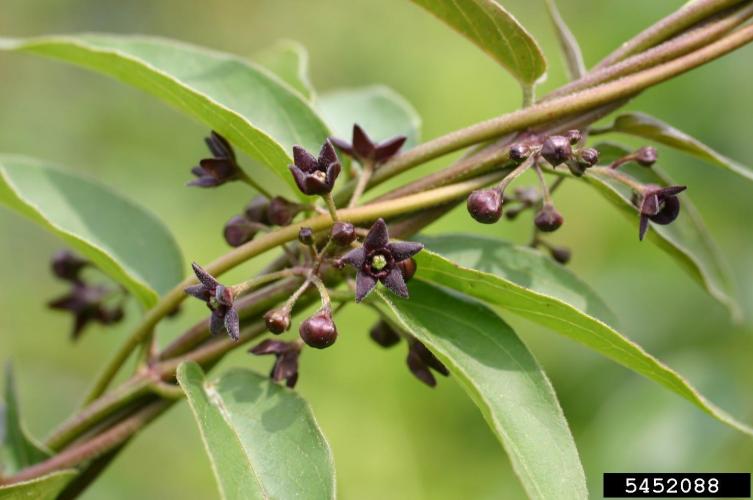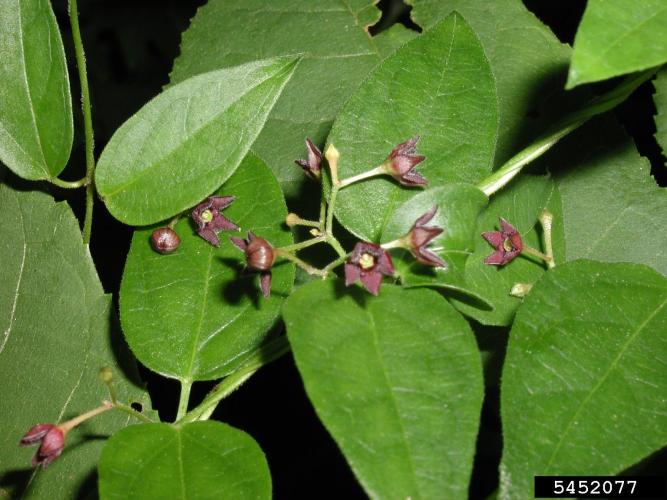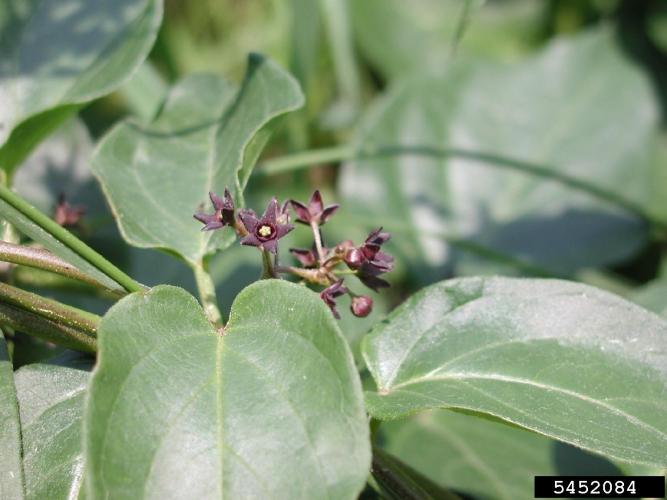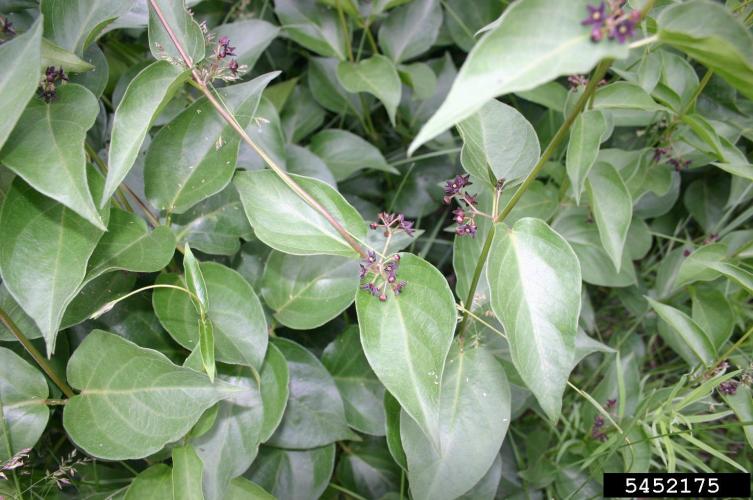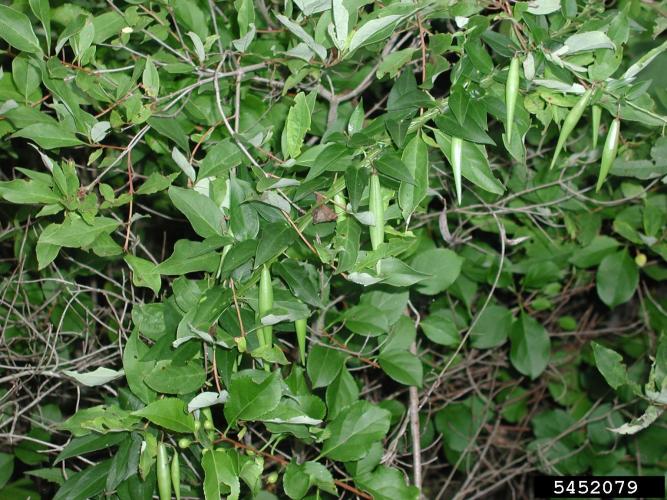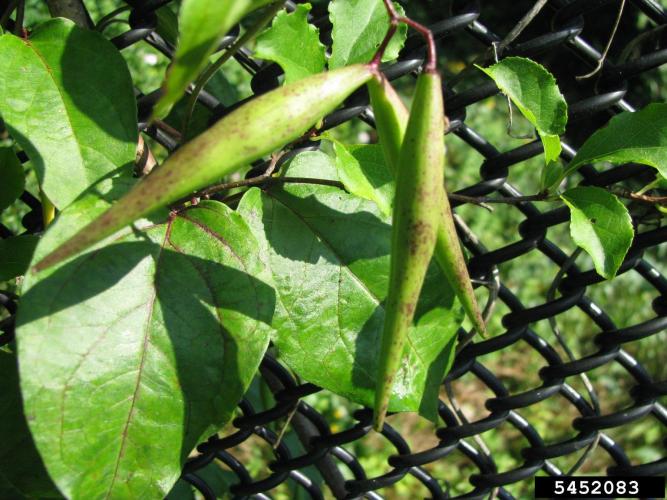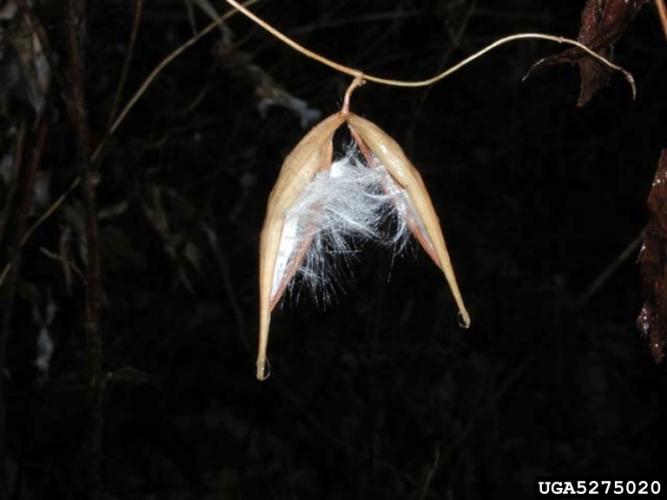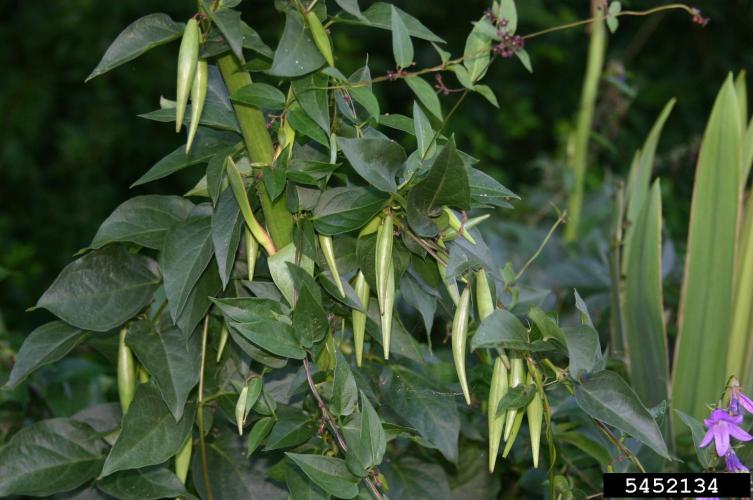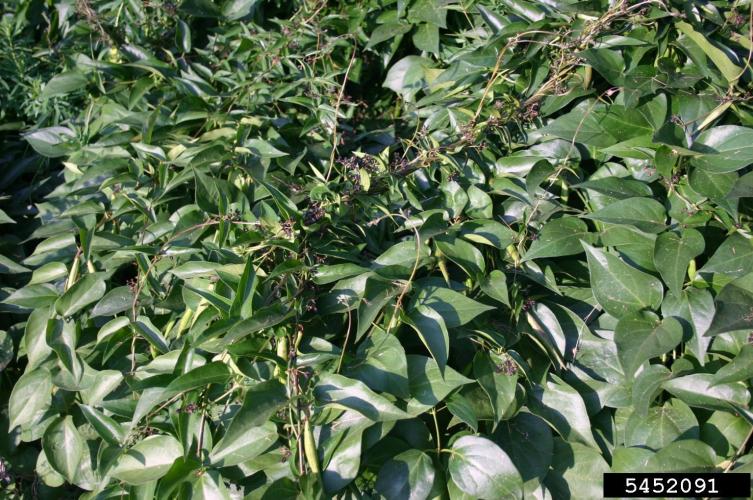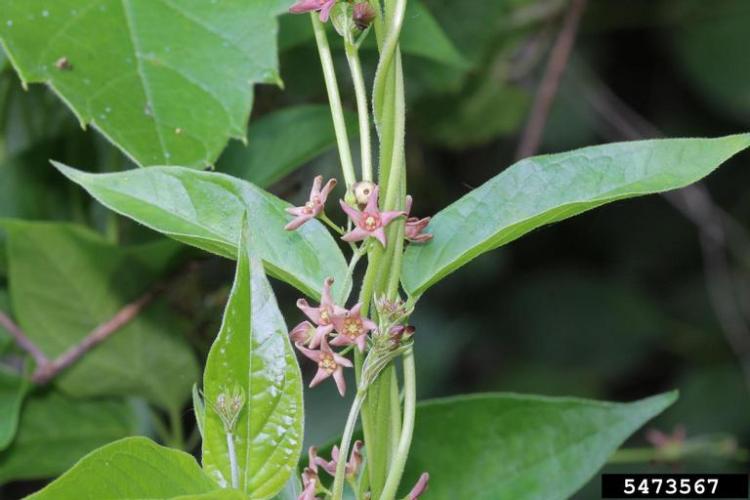Swallowwort, Black
Identification
Appearance
Cynanchum louiseae is an herbaceous, unbranched, perennial vine which can grow up to 6.5 feet in length.
Foliage
Leaves are opposite, dark green, oval, and shiny with entire margins. Leaves are from 3-4 inches long and 2-3 inches wide. A short petiole attaches the leaf to the vine.
Flowers
Clusters of 6-10 flowers bloom from June to September. Five lobed dark purple corollas are approximately 0.25 inches across and covered with short white hairs on the upper surface.
Fruit
Fruit are pods, similar to milkweed pods, which are slender, 2-3 inches long and split to reveal small seeds with tufts of white hairs. The hairs allow the seeds to be readily dispersed by wind. Plants have rhizomes that sprout new plants.
Check out the downloadable fact sheet above.
Biology
Ecological Threat
Black swallowwort (Vincetoxicum nigrum) can colonize two ways, wind borne seeds which can travel for miles or by rhizomes (underground stems) that sprout into new plant clumps and form extensive patches.
Extensive patches of swallowwort grow over other, often native, vegetation, blocking light and creating tangled thickets.
Since this plant is a member of the milkweed family, Monarch butterflies often lay their eggs on swallowwort seed pods. But swallowwort is poisonous to monarchs and its larvae die either when they feed or by starving to death.
Old field habitats of goldenrod and grasses can be replaced almost exclusively by swallowwort, completely changing their physical structure, possibly impacting nesting birds in the process.
Origin
Black swallowwort is native to Europe and escaped from a botanical garden in Massachusetts.
Habitat
Forests, forest edges, disturbed areas, meadows fields, shoreline, river banks
Life Cycle
Shoots of black swallowwort emerge in spring and the plant flowers in June and July. Flowers remain open for 6 to 8 days and smell similar to rotting fruit. The plant forms seed pods in July and early August, sometimes continuing through October. Although the shoots die to the ground each winter, the plant has a very strong, fibrous central rhizome which helps the plant survive the winter.
The life span of individual plants is somewhat unknown, but some plants have been reported to live more than 70 years. Seeds also remain viable through the winter. A healthy stand of black swallow-wort can produce between 1000-2000 seeds per square meter per year. Abundance of sunlight promotes earlier and more prolific seed production. Black swallow-work primarily reproduces by seed however cut plants can quickly replace the cut shoot from buds on the rhizome.
Vermont Distribution
How You Can Help
Native/non-invasive alternatives
Virginia creeper (Parthenocissus quinquefolia)
Native Perennials and Shrubs for Vermont Gardens
Alternatives to Common Invasive Plants and Characteristics of Select Alternatives
Citations
Photo Credits
5452083, 5452084, 5452088, 5452091, 5452077, 5275013, 5275020, Leslie J. Mehrhoff, University of Connecticut, Bugwood.org
5392705, John M. Randall, The Nature Conservancy, Bugwood.org
5473567, Robert Routledge, Sault College, Bugwood.org
Information Credit
Invasive.org, Black Swallowwort
